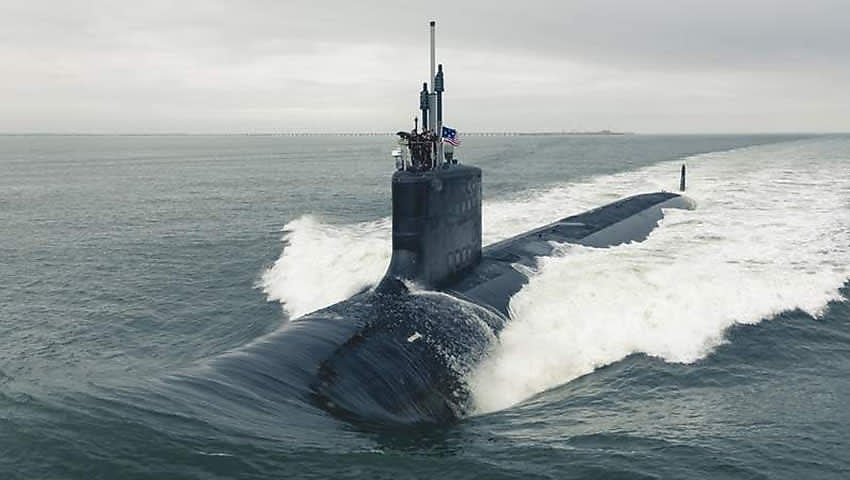Opinion: Former naval officer and defence industry analyst Christopher Skinner argues that Australia can build nuclear submarines locally in a timely and affordable manner — and analyses the threats and opportunities of Australia’s nuclear-powered submarine program.
To continue reading the rest of this article, please log in.
Create free account to get unlimited news articles and more!
The Australian recently carried the headline “Nuclear build beyond us…” and connected this with a notional need for interim conventionally powered submarines — which I dispute because we can build nuclear submarines here, and in a timely and affordable manner. This view is shared by Greg Sheridan in his latest column “We should welcome US ‘apex predators’ for interim defence”, The Weekend Australian 3–4 December, where he sees any interim submarine requirement met by basing US Navy Virginia Class boats in Western Australia.
The nub of this debate is the time it will take to acquire at least eight nuclear-powered submarines for Australia as proclaimed in the AUKUS agreement in September 2021 and earnestly confirmed by Australian governments ever since. The widespread discussion focuses on the sheer lead time to prepare for this step-change in capability in a manner that receives the full support of both the USA and the UK, and of the International Atomic Energy Agency (IAEA) on safety and security, and the wider international community on the stewardship of highly enriched uranium (HEU) nuclear fuel as used in current US and UK submarine reactors.
The issue with HEU is that this level of enrichment is also used for nuclear weapons which are expressly forbidden by the Nuclear Non-Proliferation Treaty (NPT) of which Australia is a longstanding signatory.
So what should we expect from the Nuclear Powered Submarine Task Force (of some 345 or so staff) as they complete their work by March of next year? From past experience, their primary task will be to provide to government a plausible, affordable way ahead that meets the AUKUS goal of nuclear submarines for Australia in a timely manner that avoids the need for the interim construction of conventionally powered boats. This may well require large parts of the boats to be constructed offshore with only the final assembly to be undertaken in South Australia.
In most discussions of likely options, the nuclear reactor section of the boats would almost certainly be imported, with nuclear fuel already sealed inside the reactor containment vessel within the reactor module — a cylindrical section of the submarine pressure hull some 15 metres in length — but with the fuel not yet activated. Activation of the nuclear reactor fuel is among the final steps before commissioning and is only authorised after completion of assembly, rigorous inspection and testing, launching, further testing including basin dive, and exhaustive testing, crew and support organisation training, qualification and licensing by appropriate authorities.
These processes will almost certainly be overseen and ultimately approved by both the US and the UK authorities as conditions of their support for the Australian program. Australian submarine personnel are already gaining experience in UK nuclear submarines and have US agreement for similar at sea experience in US Navy boats also.
The task force reportedly has some nine working groups addressing the many different challenges for the Australian nuclear submarine program, which is more than the teams working on several other AUKUS-supported technological focus areas. This is no surprise as the mandatory steps to nuclear competence are enormous but then so was the NASA journey to the moon.
Australia will do well to approach the nuclear submarine program in the same manner — as a timely national challenge to take us into a new level of essential self-reliance for both national security and for energy independence. We cannot go on relying on imported petroleum fuels from either a climate change or a national security perspective. So we need nuclear as a reliable, low emissions energy source anyway and the submarine program is simply the best possible way to make that transition.
A major challenge for the Australian Defence Force is how do we move all the many assets — from infantry fighting vehicles to frontline aircraft to warships and drones — to operate with fuels that are somehow derived from other sources such as LNG, and do not contribute to carbon emissions.
The bottom line then is not if can we afford the submarine program, but rather can we afford to miss out on this golden opportunity provided us by the UK and the USA to advance our national security standing, and at the same time, move on to climate-friendly energy sources?

 Login
Login







